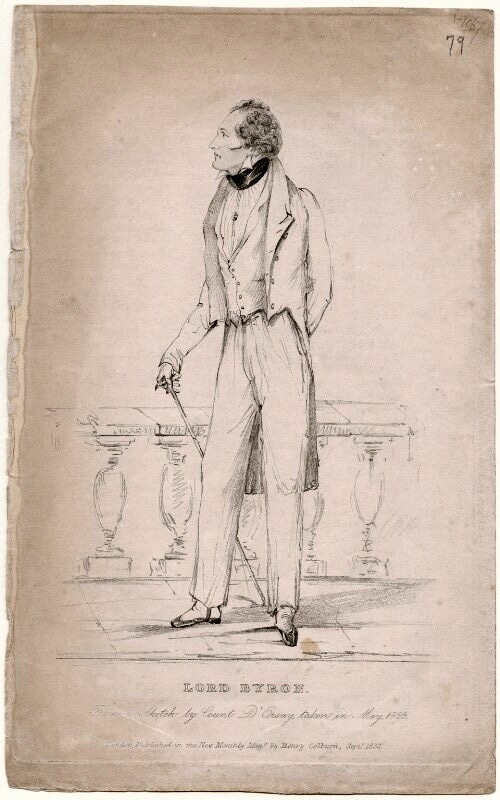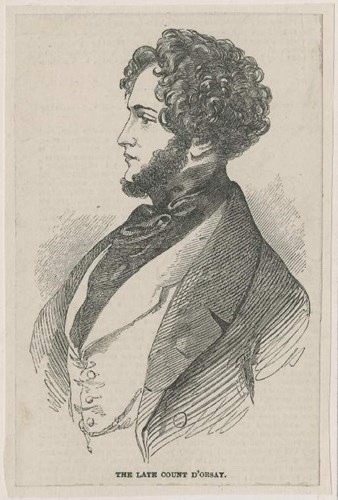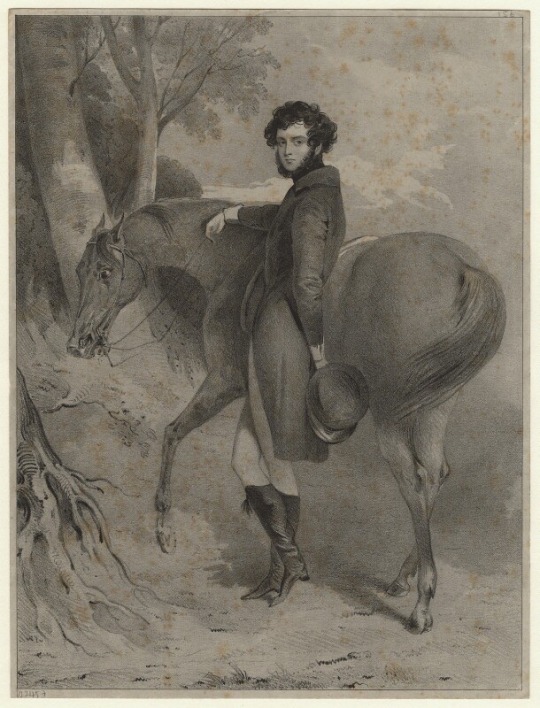#he told d’orsay to add a cap to the one drawing to hide his receding hairline LMAO
Explore tagged Tumblr posts
Text
On Lord Byron and Count Alfred D’Orsay:





Above are sketches of Lord Byron taken from life by Count Alfred D’Orsay, who Byron described as “a very handsome companion,” “one of the few specimens I have seen of our ideal of a Frenchman,” and who he nicknamed "the young philosopher" and “Cupidon déchaîné” (“raging Cupid”) after a scene from the 1707 play The Beaux' Stratagem by George Farquhar, where a man describes what the ideal portrait of his lover should look like:

Count D’Orsay was famously called the “archangel of dandyism.” He was an artist for the elite, a writer of observation, socialite, dandy, Bonapartist, “man of fashion,” and long-time adulterer with the writer Lady Blessington, whose daughter she had him marry as a front. They divorced, and he eventually died in Paris buried in debts with Lady Blessington. She was a close friend of Lord Byron which is how he got to know D’Orsay better, since D’Orsay lived and travelled with the Blessington family, the husband of which he is also sometimes speculated to have had an affair with. Byron exchanged lavish gifts with the Blessingtons: “I also enclose a ring which I would wish Alfred to keep — it is too large to wear but is formed of Lava — and so far adapted to the fire of his years and character.” D'Orsay was in his early twenties and had already become a popular figure.




A letter Byron wrote to Count Alfred is as follows:
"April 22. 1823.
My dear Count — (if you will permit me to address you so familiarly), you should be content with writing in your own language, like Grammont, and succeeding in London as nobody has succeeded since the days of Charles the Second and the records of Antonio Hamilton, without deviating into our barbarous language, — which you understand and write, however, much better than it deserves.
"My 'approbation,' as you are pleased to term it, was very sincere, but perhaps not very impartial; for, though I love my country, I do not love my countrymen — at least, such as they now are. And, besides the seduction of talent and wit in your work, I fear that to me there was the attraction of vengeance. I have seen and felt much of what you have described so well. I have known the persons, and the re-unions so described, — (many of them, that is to say,) and the portraits are so like that I cannot but admire the painter no less than his performance.
But I am sorry for you; for if you are so well acquainted with life at your age, what will become of you when the illusion is still more dissipated? But never mind — en avant! — live while you can; and that you may have the full enjoyment of the many advantages of youth, talent, and figure, which you possess, is the wish of an — Englishman, — I suppose, but it is no treason; for my mother was Scotch, and my name and my family are both Norman; and as for myself, I am of no country. As for my 'Works,' which you are pleased to mention, let them go to the Devil, from whence (if you believe many persons) they came."
From the biography D'Orsay; or, The Complete Dandy (Teignmouth, 1911):
"But it is of importance to know that he fell before the charms of the irresistible D'Orsay. Indeed so blinded was he with admiration that he not only discovered the young Frenchman to be 'clever, original, unpretending,' but also stated that 'he affected to be nothing that he was not.' We fancy D'Orsay would not have counted an accusation of modesty as a compliment."
Sources: Lord Byron's letters and journals, Lady Blessington's letters and journals, D'Orsay; or, The Complete Dandy by Teignmouth, 1911.
#fun fact: LB mainly allowed artists to depict his right side bc he said it was his better side#he told d’orsay to add a cap to the one drawing to hide his receding hairline LMAO#diva behavior#his stock looks like a collar#english literature#literature#plays#George Farquhar#lord byron#count alfred d’orsay#portraits#1800s#georgian era#restoration era#art#history#romanticism#lgbt
22 notes
·
View notes